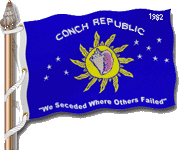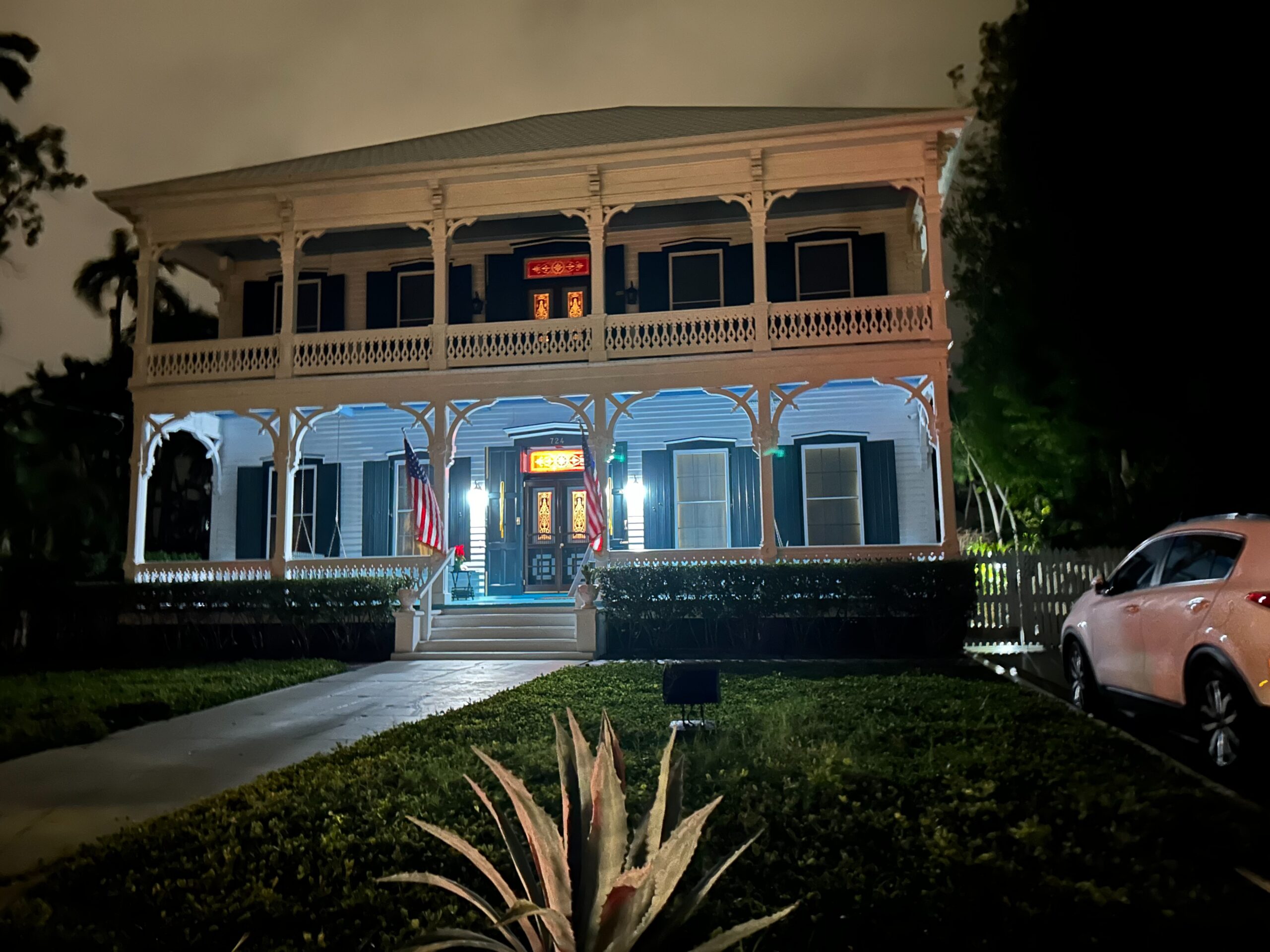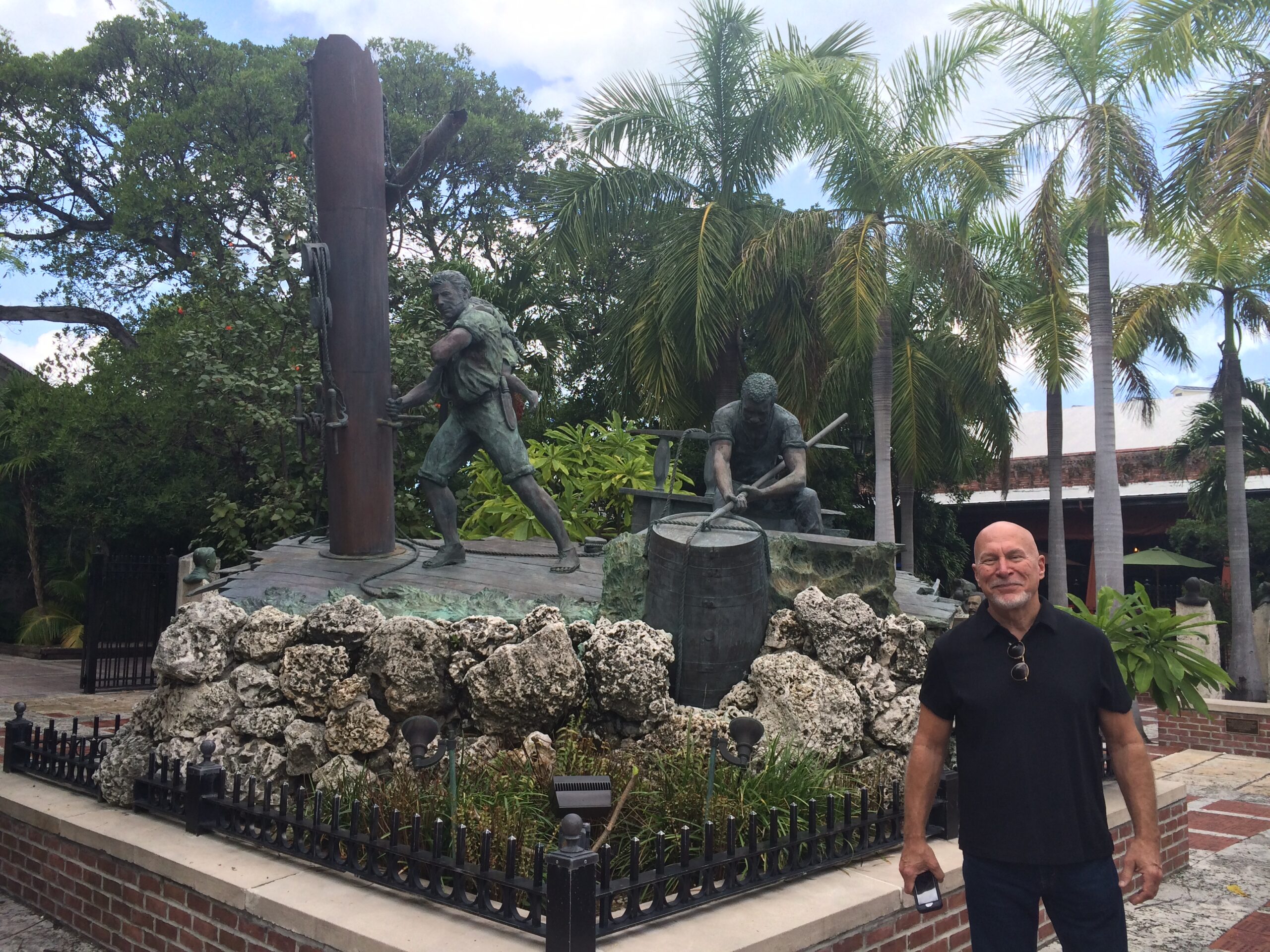 Florida’s Calusa Indian tribe was forced to migrate south to Key West where they fought to keep the southernmost lands as the New World was settled. In the process many Indians were killed and the Key West beaches were used as burial grounds. According to Key West lore, Spanish settlers found bones of the dead Indians strewn on the beach and called the island Cayo Hueso, meaning Island of Bones. Later English settlers called the island Key West, thinking that Cayo meant Key and Hueso West.
Florida’s Calusa Indian tribe was forced to migrate south to Key West where they fought to keep the southernmost lands as the New World was settled. In the process many Indians were killed and the Key West beaches were used as burial grounds. According to Key West lore, Spanish settlers found bones of the dead Indians strewn on the beach and called the island Cayo Hueso, meaning Island of Bones. Later English settlers called the island Key West, thinking that Cayo meant Key and Hueso West.
Over the years, ownership of the island has changed hands several times between the Spanish and the English. In 1815 the island was given by Spain to Juan Pablo Salas. American businessman, John Simonton, purchased the island from Salas in the early 1820’s, later selling portions of Key West to fellow businessmen Greene, Whitehead, and Fleming (all of whom have Key West streets named after them today, so be on the lookout!). The triumvirate began to develop Key West, and are even responsible for bringing the United Stated Navy down to build a base, which eventually put a stop to pirating in the area. However, settlers still had to combat illness, mosquitoes, and harsh seas.
Key West became a major shipping area, but the coral reefs caused several shipwrecks. So, salvaging became the major area industry, making the island the richest area per capita in the good old USA back then. Fishing, turtling, sponging, cigar making, and salt manufacturing were the other major industries of the island. And when Henry Flagler provided Key West access from the mainland by building the Overseas Railroad which was completed in 1912, the island grew wealthier. But Key West ended up in bankruptcy anyway thanks to the Great Depression and the hurricane of 1935 which destroyed the railway.
Still, bankruptcy could not detract from the lure of Key West. Ernest Hemingway, Tennessee Williams, and several other notable people visited or resided here which in turn attracted others to the island as well. In 1938 the Overseas Highway replaced the Railway making the island more accessible once more.
In 1982 a group of Key Westers seceded from the Union of the USA and formed the Conch Republic. The mainland barricaded the entrance to Key Largo in response so that tourists and supplies could not get through. Unable to replenish supplies, especially rum, the seceders surrendered. Still, visitors can see the flag proudly hanging up in several places around the island such as the Conch Republic Seafood Company.
For more information about Key West today check out www.gotothekeys.com or call us at 1-888-362-3474.




